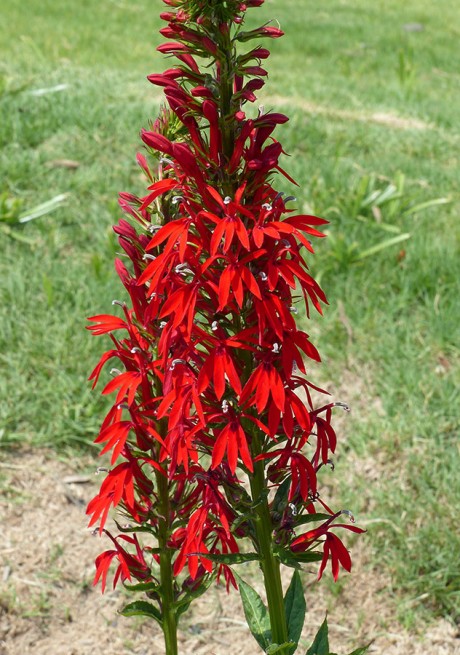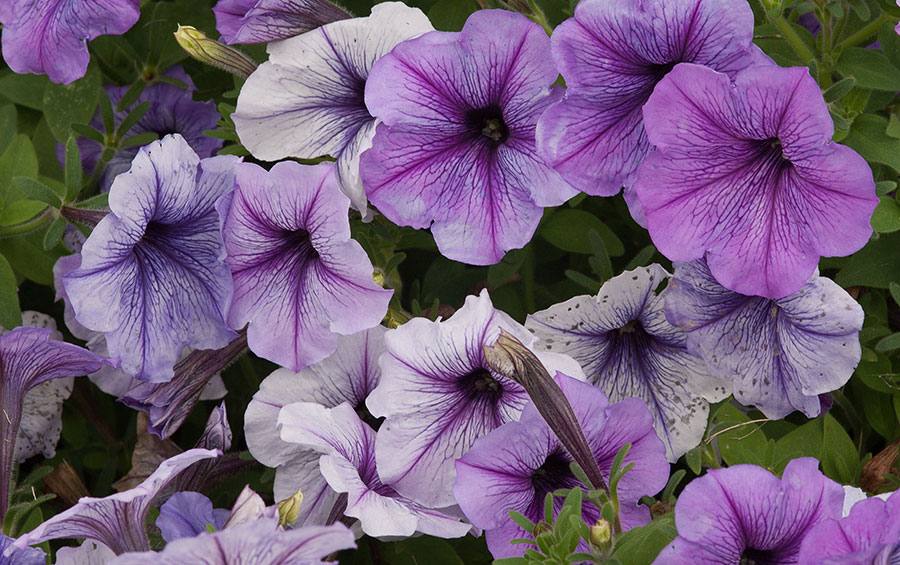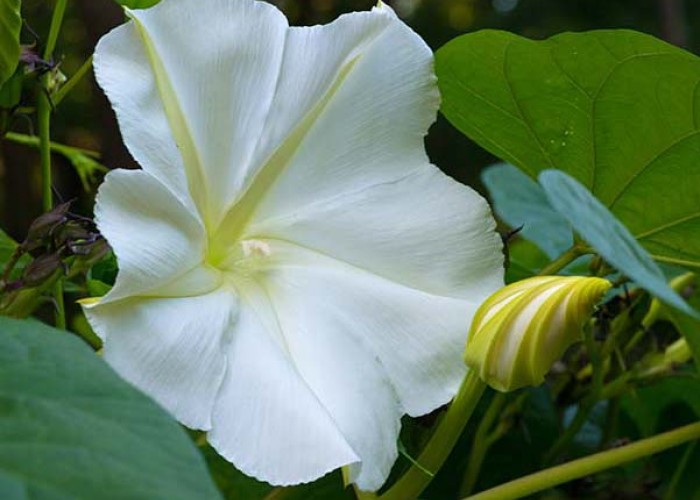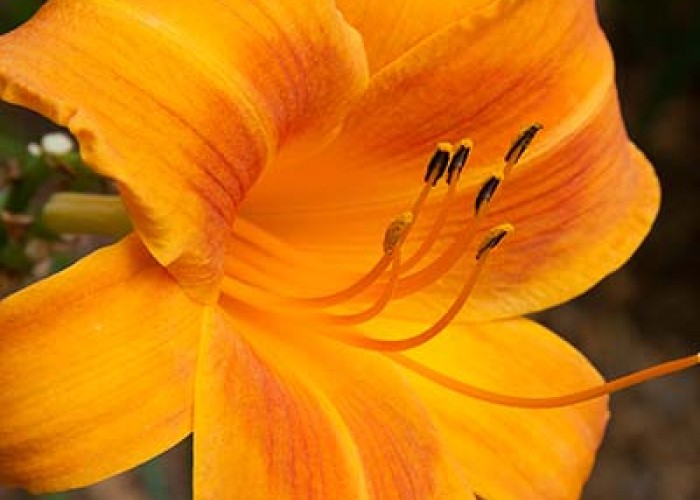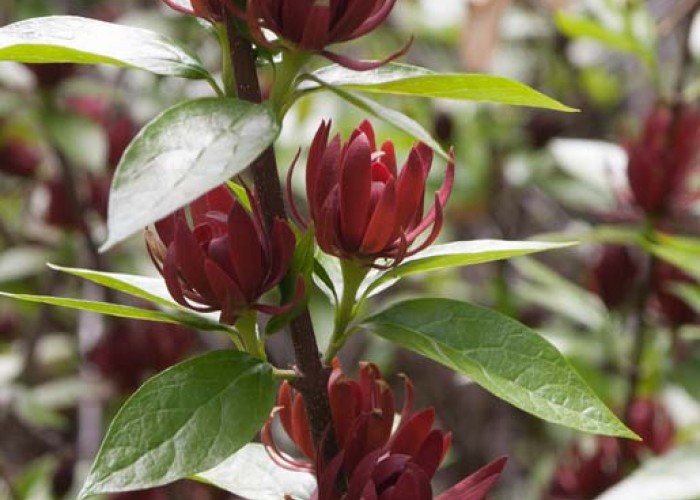Red, White and Blue Lobelia
Plus Garden To Do’s for May
By L.A. JacksonIf ever there were plants that could be classified as “patriotic perennials,” a trio of our native lobelias would be contenders for the title because: (1) These beauties call the American woodlands home; and (2) their flowers can be found in good ol’ U.S.-of-A red, white and blue hues. So, if you fancy the idea of channeling your inner Uncle Sam to the garden, consider planting this threesome:
Cardinal Flower (Lobelia cardinalis)
To me, the flowers of this herbaceous native flaunt the prettiest shade of red to be found in the garden. Its tubular blooms form on stems that rise majestically 2 to 3 feet into the midsummer air. Cardinal flower is often called a short-lived perennial, but when happy in the garden, this clump-forming plant not only reseeds but usually develops offsets that mature into another generation of fancy plants.
Great Blue Lobelia (Lobelia siphiltica)
Similar in growing habit and height to cardinal flower but with broader leaves, this indigenous plant sports spikes of eye-catching blue blooms that are slightly tinged with a pleasant purple. Another connection to its red-headed cousin is that great blue lobelia tends to be deer-resistant (More deer-resistant plants and ways to keep deer out of your garden).
White Cardinal Flower (Lobelia cardinalis ‘Alba’)
This lobelia with an oxymoron of a name is simply a white form of the red cardinal flower, and its towers of refined pale blossoms are certainly a refreshing sight on a sultry summer day. ‘Alba’ in bloom is also a magnet for butterflies and hummingbirds, just like regular
cardinal flower and great blue lobelia.
These lobelias prefer rich soil sites that are at least slightly shaded from the worst of the summer sun’s harsh afternoon rays. And they need to be watered regularly. In fact, they would probably do best residing in a rain garden or showing off on the edge of
a water garden as marginal plants.
While the regular cardinal flower is not hard to find at local nurseries, great blue lobelia and ‘Alba’ aren’t as common. However, they can be found online. Two top-notch Southern native plant nurseries to try are Sunlight Gardens (sunlightgardens.com) in Andersonville, Tennessee, and Niche Gardens (nichegardens.com) in Chapel Hill
Garden To Do’s for May
- Annuals such as zinnias, salvias, million bells, marigolds and petunias can become long, lanky and — in the flower power department — lazy, but pinching the plants back when they are about 8 inches in length will encourage branching, which leads to bushier growth and many more blossoms. And it is easy to do: Just use your thumb and forefinger to squeeze the end tip off of each limb. Later in the growing season, pinching spent flowers will encourage a longer parade of blooms through the summer.
- By the end of this month, the soil should be warm enough in annual vegetable and flower beds to allow the addition of a 3-inch layer of organic mulch to protect root zones from the baking heat of the summer and conserve ground moisture.
- The soil should be warm enough now to round out the vegetable garden with plantings of southern peas, okra, eggplant, hot and sweet peppers, lima beans and sweet potatoes.
- Want fresh, backyard fruit that doesn’t require thinning or constant spraying? Try your green thumb at growing blueberry bushes, which, by the way, can also be attractive ornamental additions to almost any landscape.
- Strawberries keep best if they are harvested early in the day. To also help extend storage life, don’t wash or de-stem the berries until you are ready to use them.
- Tough plants for tough places such as parched, open areas and sun-baked hillsides include creeping juniper, ajuga and moss pink.
- After the foliage has faded on naturalized spring-flowering bulbs (such as crocus, daffodil, snowdrops, grape hyacinth and Spanish bluebell) is a good time to dig up and divide any clumps that have become overcrowded. How will you know they have become overcrowded? The most obvious sign is a noticeable drop in flower production.
-
More May Flowers (for after April Showers)
-
Share this story:

